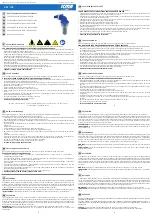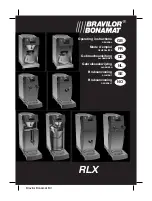
Manual 104-AIO16A and 104-AIO16E
38
Step 2. Write the Calibration Constants into the Calibration Potentiometers
Step 2 applies to both DAC and A/D Calibration. Step 1 involved applying or measuring voltages,
connecting pins and sources etc. Step 1 only needs to be performed if the data from the A/D appears to
be out-of-calibration, or approximately every 6-12 months depending on environmental and usage
considerations. Step 2 however needs to be performed every time the board is reset. In Step 2 you
merely perform a read from the EEPROM and write the value to the digital calibration potentiometers, for
each of the digital pots.
2.1
Determine the location in the EEPROM for the calibration constants. The register at Base + 12
(Chapter 5) indicates the currently jumper selected range for both the A/D and the DAC. Read
this register. Software should not assume the user has left the range setting where it was.
2.2
Read the correction constants from the EEPROM. Correlate the jumper settings as read with the
Table B-1
and read the EEPROM entries for the A/D Offset, A/D Gain, and the DAC 0 and DAC 1
corrections. Base + 18 in Chapter 5 describes the process of reading from the EEPROM.
2.3
Write each calibration constant to the correct Digital Calibration Potentiometer. Refer to Chapter 5
Base + 19 for more information on writing to the Digital Potentiometers.
EEPROM Location Calibration Value Stored
0 Unused
1 Unused
2
Offset “B” ±10V Differential
3
Offset “B” ±10V Single-ended
4
Offset “B” 0-10V Differential
5
Offset “B” 0-10V Single-ended
6
Offset “B” ±5V Differential
7
Offset “B” ±5V Single-ended
8 Unused
9 Unused
A
Scale “M” ±10V Differential
B
Scale “M” ±10V Single-ended
C
Scale “M” 0-10V Differential
D
Scale “M” 0-10V Single-ended
E
Scale “M” ±5V Differential
F
Scale “M” ±5V Single-ended
10
DAC 0, 0-10V Range
11
DAC 0, 0-5V Range
12
DAC 1, 0-10V Range
13
DAC 1, 0-5V Range
14-63 unused
Table B-1:
Factory EEPROM Calibration Locations
Remember that all of these steps are already encapsulated in a “C” language DOS compatible Calibration
program that ships free with the board. For the fastest way to write your own calibration program,
consider referring to the source code of the Calibration program.


































